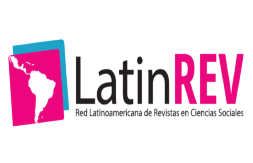Morphometric comparison between adults of Taeniopoda varipennis Rehn, 1905 (Orthoptera: Romaleidae) in Chiriquí, Panamá
DOI:
https://doi.org/10.32911/as.2023.v16.n2.1049Keywords:
Chiriquí, Cluster analysis, crops, grasshoppers, morphometryAbstract
The aim of the study was to compare the morphometry of adult specimens of the grasshopper Taeniopoda varipennis Rehn, 1905 (Orthoptera: Romaleidae), collected in Chiriquí, Panama. Materials obtained from David, Boquerón, Alanje and Bugaba districts were reviewed. The variables considered were length of the body, antenna, femur, tibia and pronotum, height of the pronotal crest and width of the pronotum. Thirty-two male specimens were selected for a K mean cluster analysis with five pre-established groups; using an online statistical application. According to the results, group 1 stood out with specimens of 5.0-5.3 cm in body length, although all the materials evaluated were close to what was described for the species. Among the factors that could influence the analyzed variables, are the climatic conditions and the available food, because although in the places from which larger specimens were obtained there are various crops, in other locations of the country a preference of the insect has been observed for reproducing and feeding on Crinum amabile plants, of which medicinal properties have been reported. In conclusion, the morphometric analysis highlighted a group of T. varipennis males, but it is necessary to continue investigating its ecology, behavior and possible alternatives for use.
Downloads
References
Atencio-Valdespino, R.; Zachrisson, B.; Collantes, R.; Lezcano, J.; González-Dufau, G. y Barba-Alvarado, A. (2021). La Familia Acrididae (Orthoptera: Acridoidea) y su impacto en la agricultura en Panamá. Ciencia Agropecuaria, (32), 71-94. http://www.revistacienciaagropecuaria.ac.pa/index.php/cienciaagropecuaria/article/view/421
Banco Mundial. (2023). Población Total – Panamá. Grupo Banco Mundial.
https://datos.bancomundial.org/indicator/SP.POP.TOTL?locations=PA
Cigliano, M.; Braun, H.; Eades, D. y Otte, D. (2023). Orthoptera Species File Online. OSF Online. http://orthoptera.speciesfile.org/HomePage/Orthoptera/HomePage.aspx
Collantes, R. (2023). Afinidad morfométrica entre especies del género Camarotus Germar (Coleoptera: Curculionidae). Revista Investigaciones Agropecuarias, 5(2), 113–120. https://revistas.up.ac.pa/index.php/investigaciones_agropecuarias/article/view/3901
Collantes, R. (2021). Aplicación de la Morfometría en la identificación de especies de la Tribu Xyleborini (Coleoptera: Curculionidae: Scolytinae). Aporte Santiaguino, 14(1), 93-103. https://doi.org/10.32911/as.2021.v14.n1.772
Collantes, R. (2020). Taeniopoda varipennis Rehn (Orthoptera: Acridoidea: Romaleidae) asociado a áreas urbanas en la ciudad de David, Chiriquí, Panamá. Revista Investigaciones Agropecuarias, 3(1), 1-11. https://doi.org/10.48204/j.ia.v3n1a1
Collantes, R.; Perla, D. y Rodríguez, A. (2022a). Afinidad morfométrica en la Tribu Coccinellini (Coleoptera: Coccinellidae) de la costa peruana. Revista Semilla del Este, 3(1), 76-84. https://revistas.up.ac.pa/index.php/semilla_este/article/view/3204
Collantes, R.; Jerkovic, M.; Atencio, R.; Hernández, P. y Vaña, M. (2022b). Percepción de la entomofagia como alternativa alimenticia saludable en Panamá. Revista Peruana de Ciencias de la Salud, 4(3), e384. http://dx.doi.org/10.37711/rpcs.2022.4.3.384
Collantes, R.; Santos-Murgas, A.; Atencio-Valdespino, R.; Barba-Alvarado, A.; Lezcano, J.; Suira, J. y Guerra-Samudio, J. (2023). Tropidacris cristata (L., 1758) (Orthoptera: Romaleidae): ampliación del rango de distribución en Panamá. Revista Investigación Agraria, 5(2).
Costa Neto, E. y Ramos-Elorduy, J. (2006). Los insectos comestibles de Brasil: etnicidad, diversidad e importancia en la alimentación. Boletín Sociedad Entomológica Aragonesa, (38), 423−442. http://sea-entomologia.org/PDF/GeneraInsectorum/GE-0062.pdf
Gordón, R. (2020). Variabilidad climática y su efecto sobre la producción de maíz. Instituto de Innovación Agropecuaria de Panamá. 48 p. https://proyectos.idiap.gob.pa/uploads/adjuntos/VARIABILIDAD_CLIMATICA_Y_SU_EFECTO_SOBRE_LA_PRODUCCI%C3%93N_DE_MA%C3%8DZ.pdf
Halloran, A. y Vantomme, P. (2013). La contribución de los insectos a la seguridad alimentaria, los medios de vida y el medio ambiente. Organización de las Naciones Unidas para la Alimentación y la Agricultura – Roma, Italia. https://www.fao.org/3/i3264s/i3264s00.pdf
Halsch, C.; Shapiro, A.; Fordyce, J.; Nice, C.; Thorne, J.; Waetjen, D. y Forister, M. (2021). Insects and recent climate change. PNAS, 118(2), e2002543117. https://doi.org/10.1073/pnas.2002543117
Joron, M. (2003). Aposematic coloration. En R. T. Cardé y V. H. Resh (eds.), Encyclopedia of insects [pp. 39-45]. Academic Press, New York. https://joron.cefe.cnrs.fr/wp-content/uploads/2019/01/joron02apo.pdf
Likhitwitayawuid, K.; Angerhofer, C. K; Chai, H.; Pezzuto, J. M.; Cordell, G. A. y Ruangrungsi, N. (1993). Cytotoxic and antimalarial alkaloids from the bulbs of Crinum amabile. J Nat Prod., 56(8), 1331-8. https://doi.org/10.1021/np50098a017
Mathew, L.; Joseph, G. y Cyril, A. (2022). Orthopteran diversity in tropical ecosystems of Central Kerala, India. Indonesian Journal of Forestry Research, 9(1), 121-133. http://dx.doi.org/10.20886/ijfr.2022.9.1.121-133
Montenegro, E. (2020). IDIAP descarta por el momento presencia de plaga de langosta en Panamá. Panamá América.
Pantoja, A.; Smith-Pardo, A.; García, A.; Sáenz, A. y Rojas, F. (2014). Principios y avances sobre polinización como servicio ambiental para la agricultura sostenible en países de Latinoamérica y el Caribe. Primera Edición. FAO, Santiago, Chile. https://www.fao.org/3/i3547s/i3547s.pdf
OIRSA (Organismo Internacional Regional de Sanidad Agropecuaria). (2021). Alerta Fitosanitaria Regional ante presencia de langosta centroamericana en el sur de México y norte de Guatemala. Dirección Regional de Sanidad Vegetal, OIRSA.
https://www.oirsa.org/contenido/20202/2021/3ra%20alerta%20Langosta%20Voladora%2012.01.21.pdf
Obando, V. (2011). Variabilidad morfométrica de Neoleucinodes elegantalis (Guenée): perforador de fruto de solanáceas de importancia económica. [Tesis de Maestría, Universidad Nacional de Colombia – Medellín, CO]. 80 p.
https://repositorio.unal.edu.co/bitstream/handle/unal/8673/37084704.2011.pdf?sequence=1&isAllowed=y
Rivera, J. y Carbonell, F. (2020). Los insectos comestibles del Perú: Biodiversidad y perspectivas de la entomofagia en el contexto peruano. Ciencia & Desarrollo, (27), 5-36. https://doi.org/10.33326/26176033.2020.27.995
Rowell, C. (2013). The Grasshoppers (Caelifera) of Costa Rica and Panama. The Orthopterists’ Society. 612 pp. http://hdl.handle.net/11606/453
Singh, G. y Saxena, R. K. (2017). Chemistry and Medicinal Properties of Hymenocallis littoralis. International Journal of Science and Research, 6(11), 1327-1329. 10.21275/ART20178293
Statistics Kingdom. (2023). Cluster analysis. https://www.statskingdom.com/cluster-analysis.html
Published
How to Cite
Issue
Section
License
Copyright (c) 2023 Ruben Darío Collantes, Jahzeel Samaniego, Alonso Santos-Murgas, Randy Atencio Valdespino, Maricsa Jerkovic

This work is licensed under a Creative Commons Attribution 4.0 International License.




















